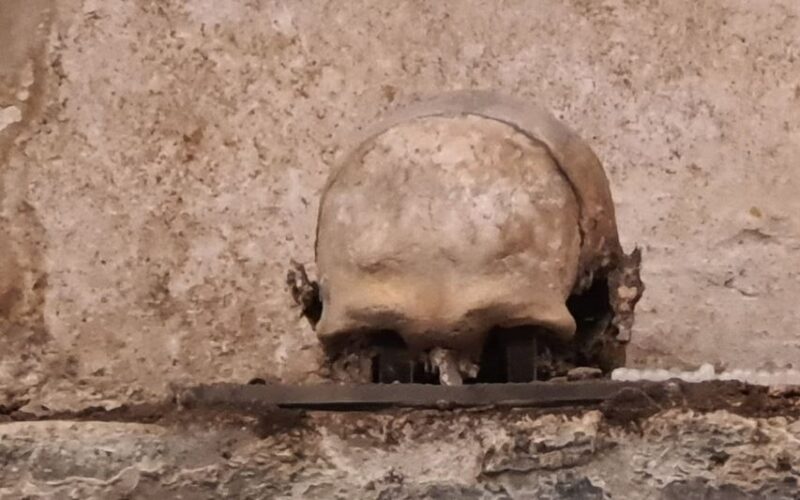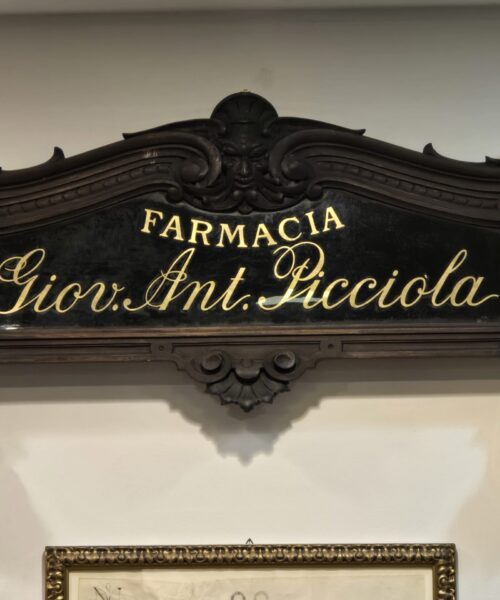In the fervent and chaotic belly of Naples, amidst narrow streets and ancient buildings that tell tales of times past, lies a sacred place steeped in mystery and unconventional spirituality. This is the church of Santa Luciella ai Librai, the guardian of a tradition deeply rooted in the Neapolitan popular culture, that of the worship of the ‘anime pezzentelle’ or needy souls.
In the pale light of a twilight reflected among the narrow alleys, the entrance to the church appears as a gateway to the unknown. A sense of mysterious sanctity, imbued with a sober and refined beauty, welcomes the visitor.
Inside, the air is heavy with silence, only broken by the whisper of time which seems to have a different rhythm, almost suspended between two worlds. The walls, embraced by an atmosphere of veneration, are adorned with votive offerings and images of suffering souls, portraits of the so-called ‘anime pezzentelle’, the poor souls, which according to Neapolitan tradition, are left to themselves and trapped in Purgatory, waiting for a friendly hand to help them reach eternal peace.
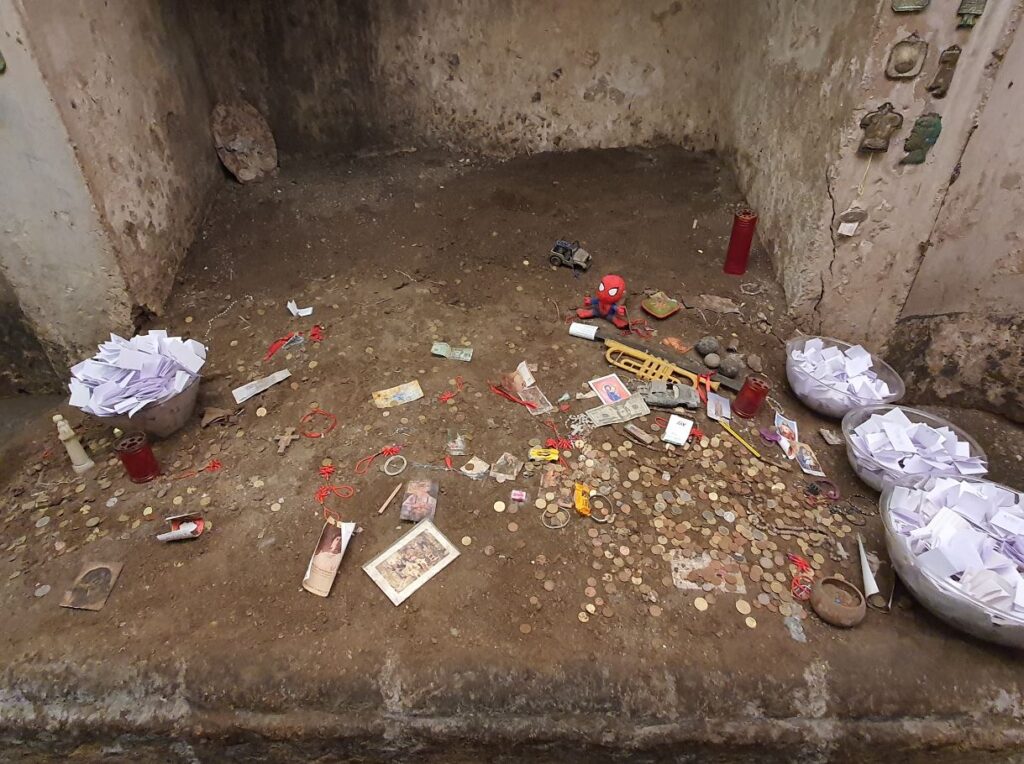
At Santa Luciella, these anonymous souls find voice and presence. Offerings and prayers are laid at the feet of their images in the hope of soothing their pain and accelerating their passage to Paradise. In return, it is said that these souls, once freed, can intercede on behalf of the living, offering protection and blessings.
The most enigmatic and unsettling element of this church, however, is the ‘capuzzella with ears’. It is a human skull, of a woman according to tradition, with two unusual “ears”. A ghastly sight, yet the object of fervent veneration. The faithful pray to this bizarre skull, hoping that through its ears, it may hear their prayers and convey them to the needy souls in the afterlife.
However, the mystery of the ears has also stimulated more scientific theories. The first attributes the strange protrusions to a cranial malformation, given the unusually high forehead of the skull. The alternative suggests that the humidity of the crypt may have caused the symmetrical detachment of the bones of the skull.
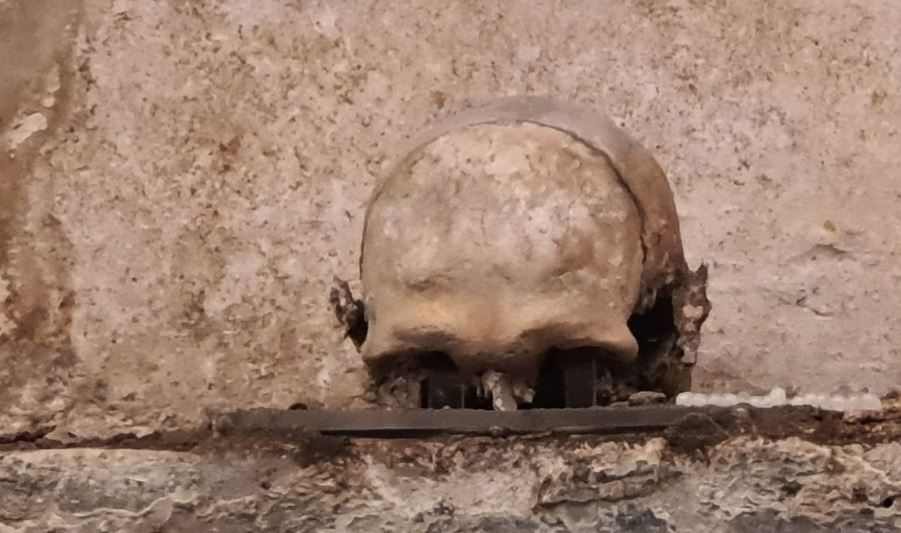
In any case, the origin of the ‘capuzzella with ears’ remains a mystery. Perhaps the answers lie buried under the ancient stones of Naples, or perhaps they reside only in the hopes and prayers of the faithful. What is certain is that this strange relic continues to listen to the stories of mortals, suspended between the world of the living and that of the dead.
In the silence of this church, one can almost hear the buzz of these souls, their muffled laments, their supplications. Tradition has it that by leaving an offering and addressing a prayer to the skull with ears, these souls may listen and respond, becoming a bridge between the world of the living and that of spirits.
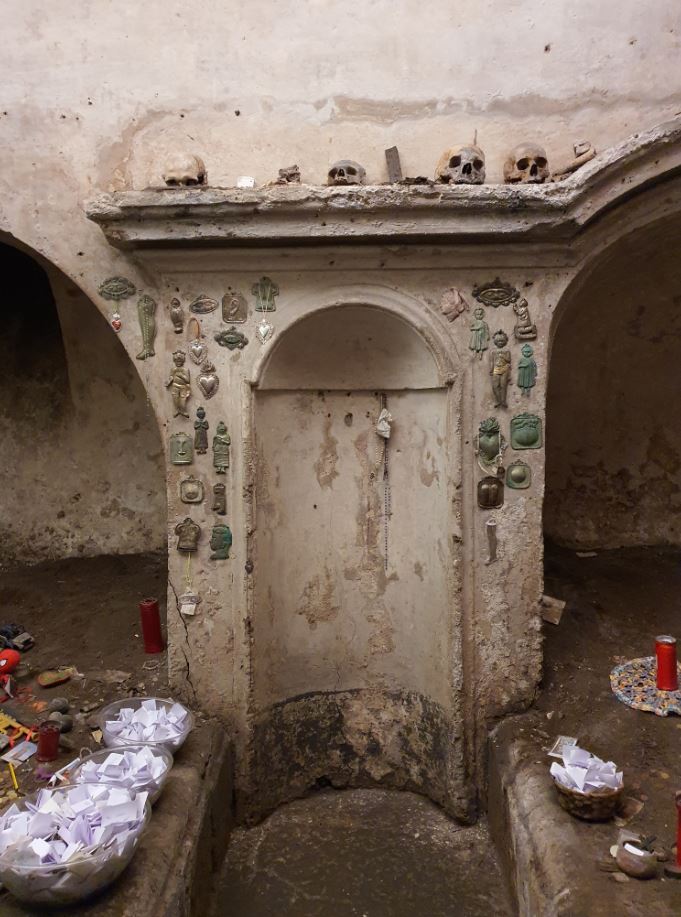
Santa Luciella in Naples is not just a church; it is a place where faith, superstition, and a form of spirituality deeply rooted in popular culture intertwine. It is a place where the thin veil between the world of the living and that of the dead seems to thin out, where the echo of ancient beliefs still resonates in the silent prayers of the faithful.
In this church, the worship of the ‘anime pezzentelle’ reveals a different Naples, suspended between the sacred and the profane, between life and death, between pity and fear. A Naples that, in its tangle of streets and stories, still hides the secrets of a distant past, told with the subdued voice of its needy souls.

